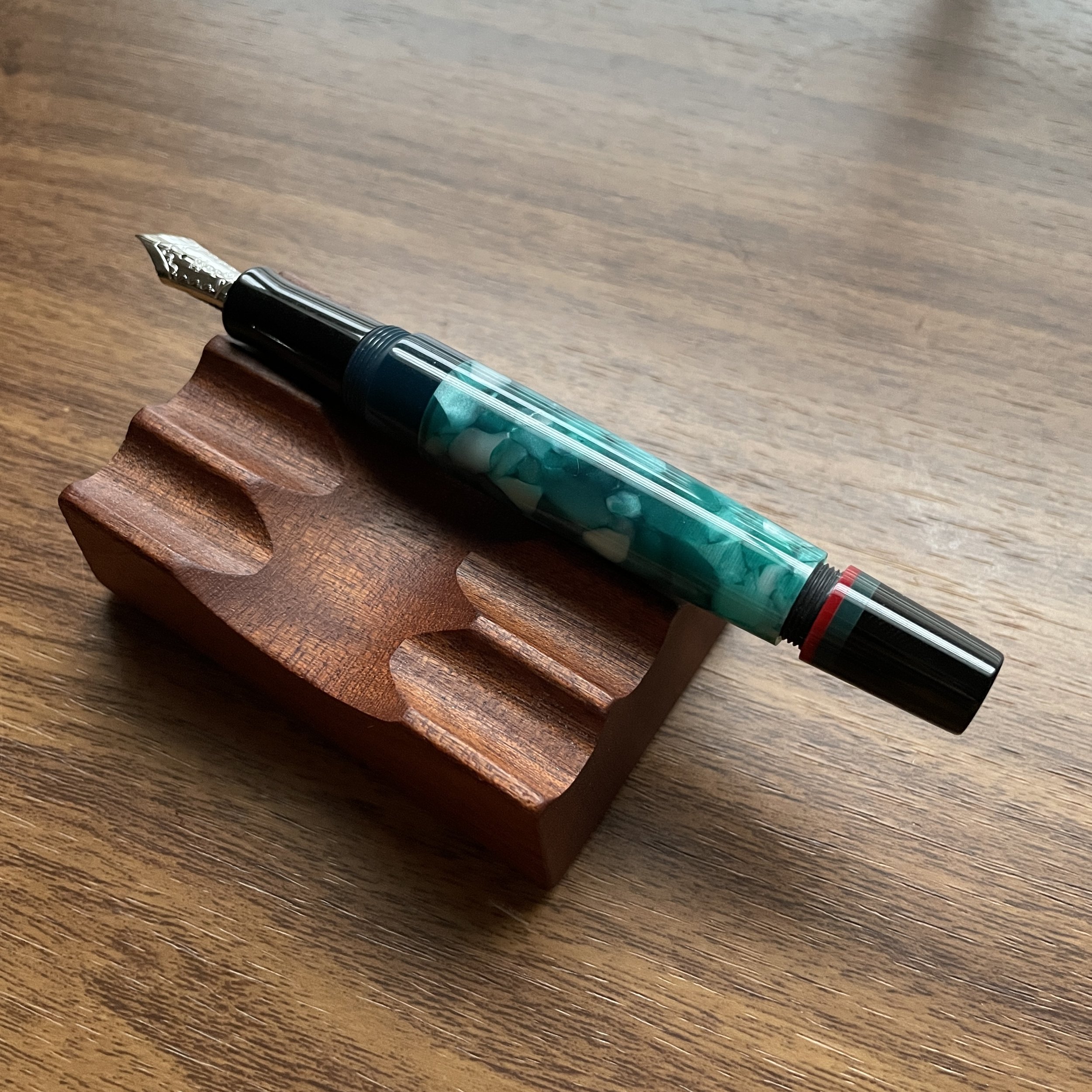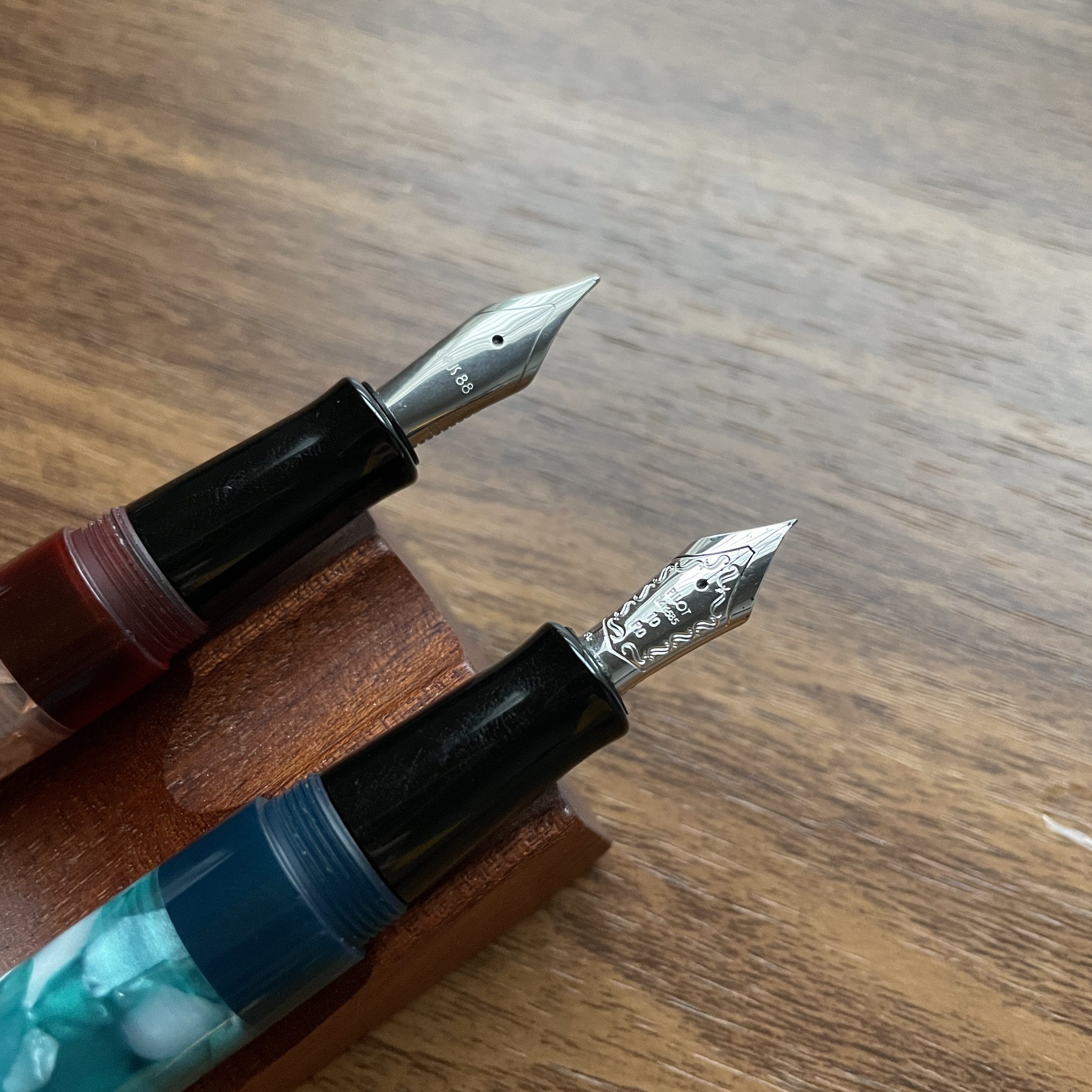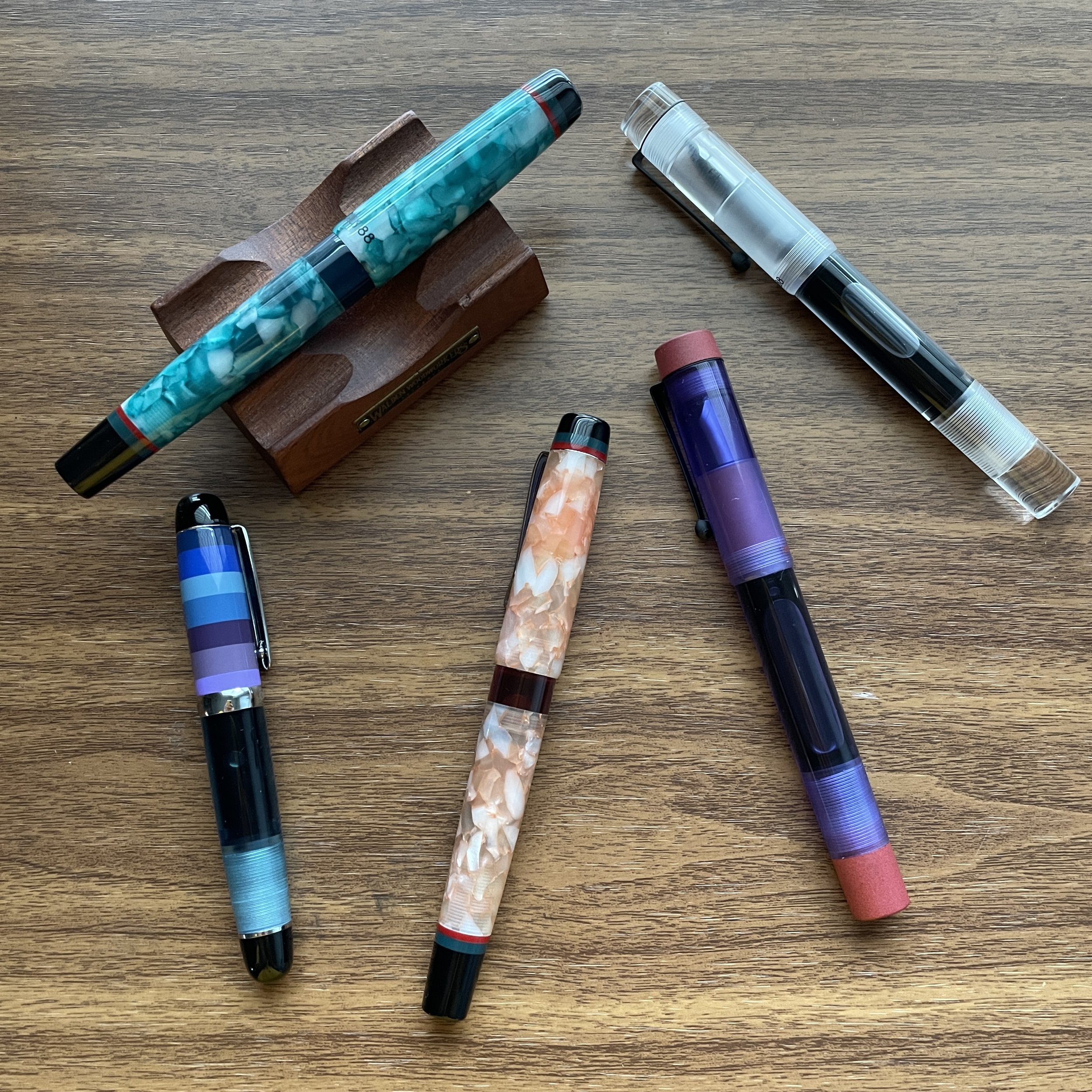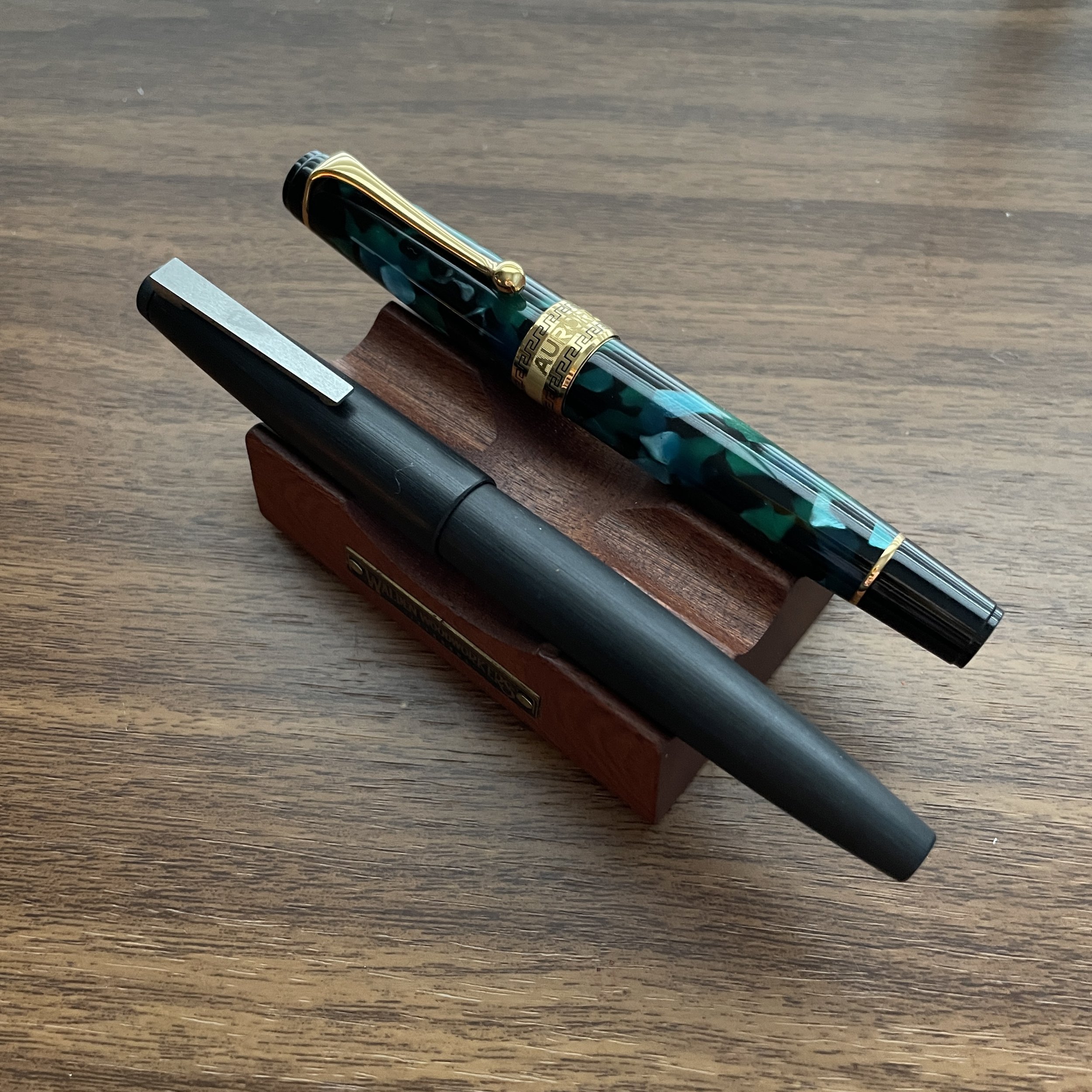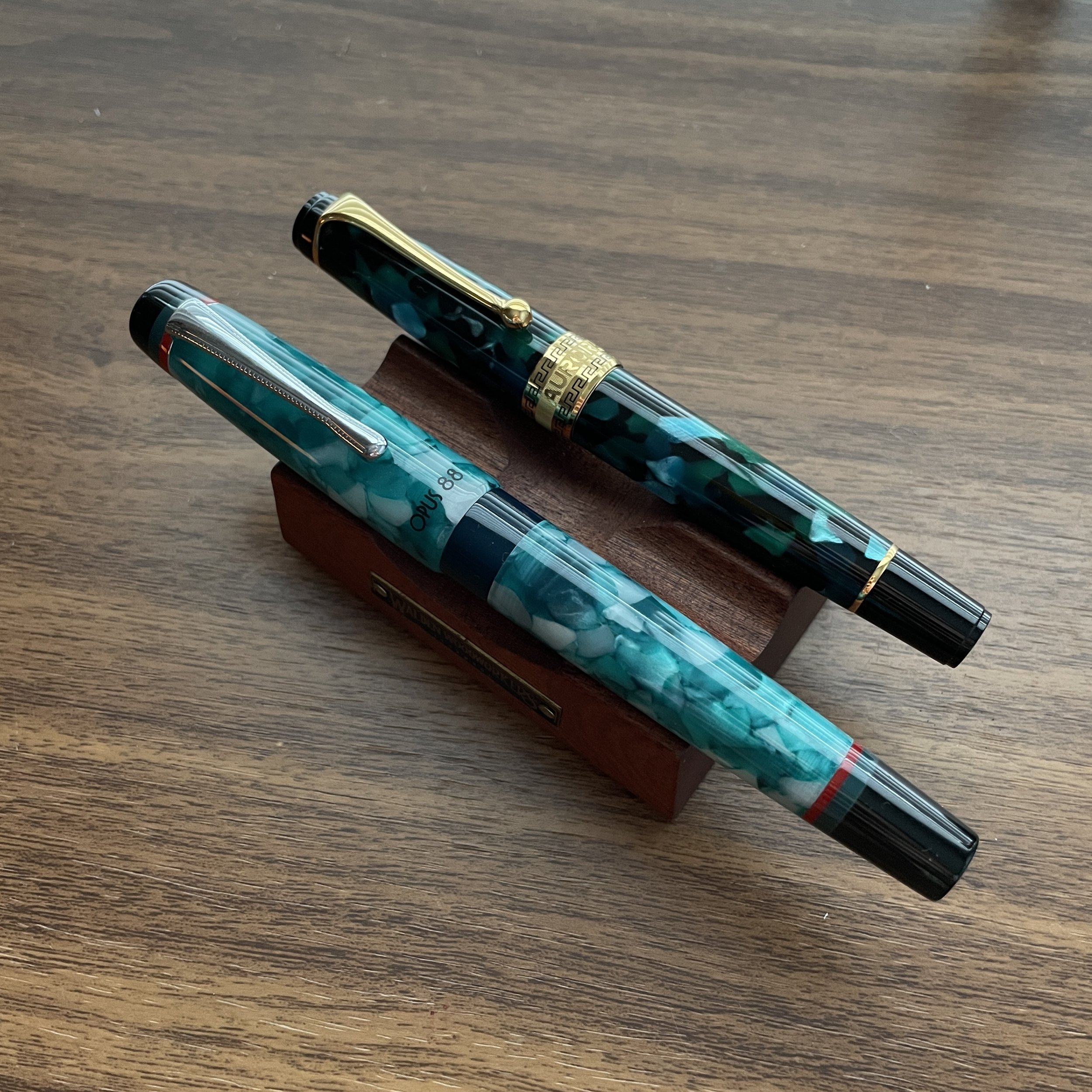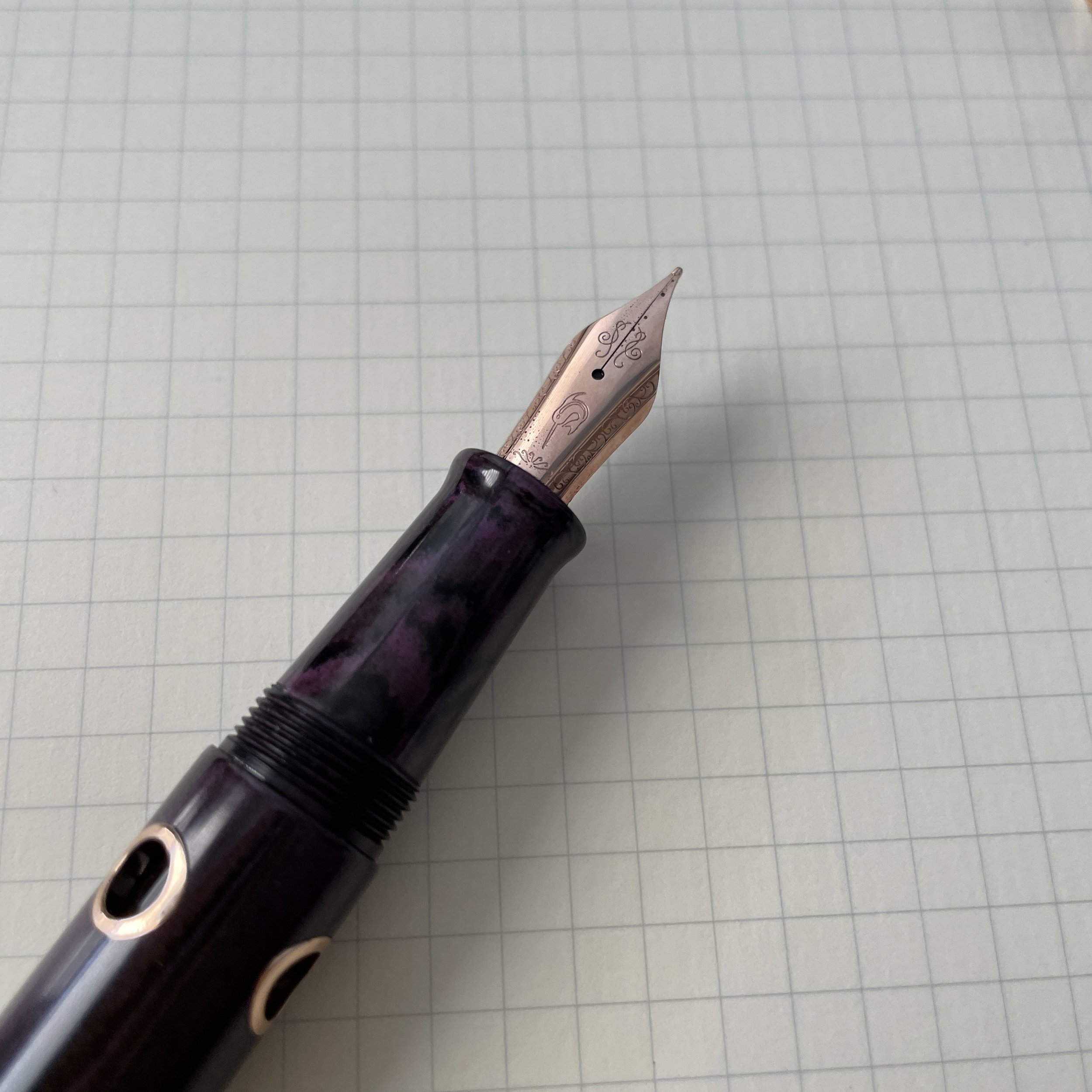Now that we’re all fully saturated with fountain pen purchases and fountain pen-related content after last week’s Fountain Pen Day celebration, why don’t we talk about something a bit different? I often get asked, “If you’re not writing with a fountain pen, then what are you using?” The answer is that it’s almost always either a ballpoint pen or a pencil, with ballpoints stealing an increased role from the gel pens and rollerballs in my collection. Today I’ll discuss five reasons why I enjoy ballpoint pens, particularly for work-related writing and annotation.
Ballpoints are true “write anywhere” pens. If you need to get work done, and you don’t want to worry about the kind of paper you’re using, the ballpoint gives you the most versatility. For many, office copy paper is tissue-thin (like mine), and sometimes you’ll want to annotate something like a shiny-sheet magazine article or professional journal. Ballpoint is pretty much your only option.
Ballpoint ink dries quickly and offers permanence. Taking a lot of notes on documents where you need to flip through pages, and don’t want to worry about your fountain pen ink smearing? Not only does ballpoint ink dry near-instantaneously, but it’s also waterproof, which is why many in the medical and legal professions are actually required to use ballpoint pens on a daily basis in certain contexts.
Needle-tip ballpoint pens are excellent for annotation. I would say that half of the ballpoints I currently have in rotation are Japanese needle-tip ballpoints that I use to write in my Plotters (particularly the Mini-5 model), and to take notes in books that I’m reading. My number one recommendation for this category has always been the Traveler’s Company Brass Ballpoint and the arrival of my pen show special editions, pictured above, is actually what prompted this post. Smaller pens such as the Traveler’s ballpoint and the Penco Perfection series clip easily to a pocket notebook or paperback, allowing for portability and ease of deployment, but if you prefer something larger, consider any of the pens that use the Ohto needle-tip ballpoint refill, such as the Mark’style “Tous les Jours.”
Refills can last for years, and are relatively inexpensive. Though more expensive on a per-cartridge basis than fountain pen ink cartridges, ballpoint refills last much, much longer. (They similarly last much longer than liquid-ink rollerball refills, which I consider to be among the worst value propositions.) I currently have ballpoint pen cartridges that have been in use for years, with the “Goliath” cartridge in the workhorse Caran d’Ache 849 leading the way, and needle-tip pens using so little ink to the point that the refill in my first Traveler’s Ballpoint is still halfway full despite three years of use.
Ballpoint pens are largely distraction free. I say “largely” only because many ballpoints are click-pens, and the knock can serve as a fidget device both annoying and fascinating, but a ballpoint often allows me to focus on highly technical work or writing more than a fountain pen. Despite best intentions, it’s easy to find yourself more focused on the nib, ink, finish, etc. of a fountain pen than on the writing you’re actually doing. With a ballpoint, there just aren’t as many variables.
For all of these reasons and more, if someone asks me for a “nice pen recommendation” for a person who’s NOT already a known fountain pen user, that recommendation will almost always include one or more ballpoint options. As we enter the holiday gift season, it’s especially important to pay close attention to the needs of the person you’re buying for - while many of us love our fountain pens, they aren’t for everyone, and a nice ballpoint could be the best option for them. Stay tuned for more recommendations and discussion in the full holiday gift guide, coming later this month.
Ballpoint pens I’ve used over the past week, from left: The Caran d’Ache 849 (first two); Rotring 600 ballpoint, old Levenger edition; Studio Neat Mark One (with Schmidt Easyflow ballpoint refill); Bic Cristal; Caran d’Ache “Infinite” ballpoint, which I actually consider one of the biggest steals on the market right now; the Lamy 2000 ballpoint, and my two new Traveler’s pens.
The Gentleman Stationer is supported entirely by sales through the T.G.S. Curated Shop and pledges via the T.G.S. Patreon program. If you’re interested in shopping for a quality ballpoint pen for yourself or a gift recipient, we’d appreciate your support!
